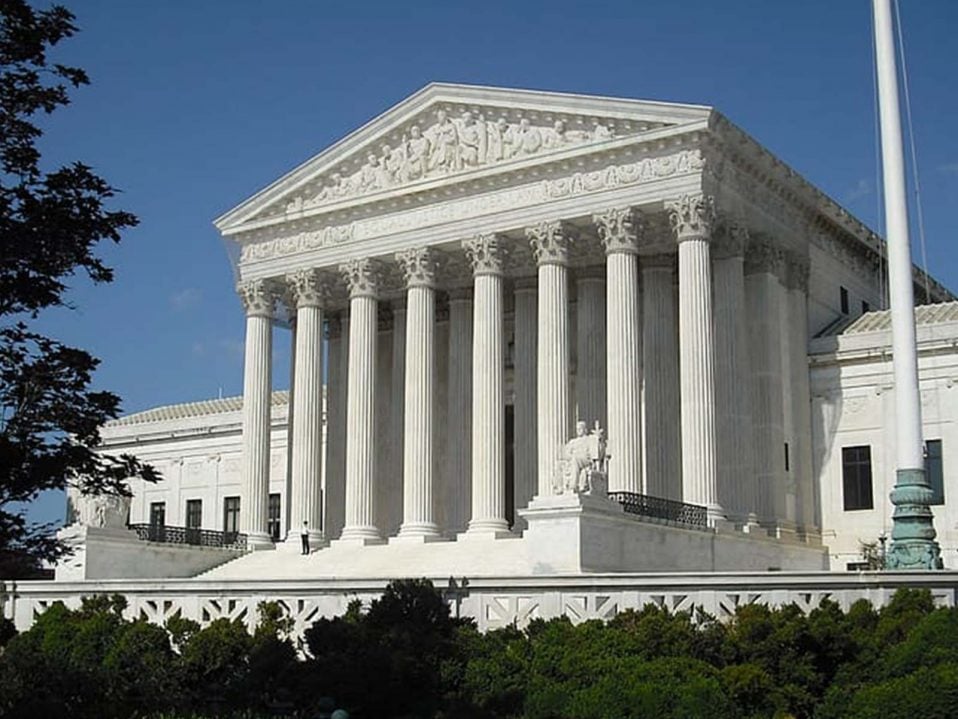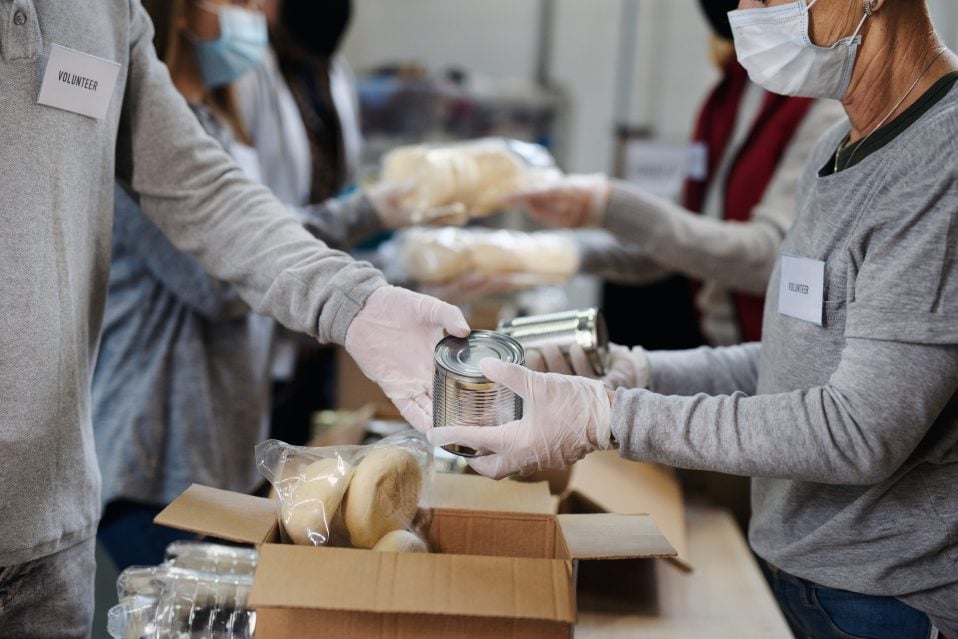What do the Supreme Court’s Decisions in Roman Catholic Diocese v. Cuomo and South Bay United Pentecostal Church v. Newsom Require?
Guest piece by Caroline Mala Corbin, Professor of Law and Dean’s Distinguished Scholar at University of Miami School of Law.
In two orders, one in November 2020 and one in February 2021, the Supreme Court held that state regulations meant to curtail the spread of the coronavirus most likely violated the Free Exercise Clause of the First Amendment – the clause that protects people’s right to practice their religion. However, there has uncertainty as to exactly what these rulings mean. This short memo attempts to clear up some confusion on what these decisions require for the future.
In November, at the start of the latest surge of coronavirus cases, the Supreme Court ruled that New York City’s temporary pandemic restrictions likely violated the Free Exercise Clause. New York had imposed mass gathering limits in zones that were particularly hard hit by the virus. In red zones, although ‘nonessential gatherings of any size” were prohibited, houses of worship were allowed to remain open, up to a maximum of ten people. In yellow zones, houses of worship were limited to gatherings of 25 people. Meanwhile, essential businesses, which ranged from supermarkets to transportation facilities, were not so severely limited.
Two houses of worship, the Roman Catholic Diocese of Brooklyn and Agudath Israel of America, sued. In November, the Supreme Court held in Roman Catholic Diocese of Brooklyn v. Cuomo that the restrictions probably violated the Free Exercise Clause. Specifically, New York “single[d] out houses of worship for especially harsh treatment” because it imposed strict limits on houses of worship while allowing essential businesses to remain open without those same limits.
Meanwhile, in California, the Governor had imposed restrictions keyed to the severity of the outbreak. In the hardest hit Tier 1 counties, all large indoor gatherings were prohibited, including those congregating for worship. The orders also banned indoor singing and chanting because of those activities’ high risk of transmitting the virus. The orders allowed essential businesses and shops in Tier 1 counties to remain open, although subject to significant capacity limits.
In February 2021, the Supreme Court in South Bay United Pentecostal Church v. Newson said California must temporarily halt its ban on indoor worship services. At the same time, the Court held that California could impose a 25% capacity limit on worship services in Tier 1 counties and could prohibit singing and chanting at those services.
The decisions are not final decisions on the merits.
The parties did not fully brief and argue these cases before the Supreme Court. Instead, the houses of worships won emergency injunctions. That is, the New York congregations asked the Supreme Court to stop implementation of the Governor’s orders until the Second Circuit Court of Appeals had a chance to hear the case. In California, the church sought an injunction until the Supreme Court decided whether it wanted to grant certiorari to the Ninth Circuit’s decision. Thus, neither was a final decision on the merits, but an interim decision that the restrictions should not apply for now.¹
The decisions did not overrule existing Free Exercise Clause law.
The existing rule for the Free Exercise Clause cases is that neutral laws of general applicability are constitutional. While neutrality and general applicability are separate inquiries, the two issues are interrelated.
An order is neutral if it does not target religion. The neutrality requirement is meant to capture discriminatory targeting of religion. According to the Supreme Court, the touchstone of neutrality is whether “the object of [the] law is to infringe upon or restrict practices because of their religious motivation.”²
General applicability is another way to ferret out discriminatory treatment of religion. The idea is that “government, in pursuit of legitimate interests, cannot in a selective manner impose burdens only on conduct motivated by religious belief.”³ That is, the government cannot accomplish its goals at the expense of religious organizations alone. When religious conduct must bear the cost, but not secular conduct that “endangers [the government’s] interests in a similar or greater degree,”⁴ a law is not generally applicable.
According to the Supreme Court, the regulations of New York and those of California were neither neutral nor generally applicable.
The decisions require that religious activities not be treated worse than secular activities that pose the same health risks. They do not require that religious activities be treated the same as any and all secular activities.
[Note that the analysis that follows is based primarily on the Supreme Court’s per curium opinion in Roman Catholic Diocese of Brooklyn v. Cuomo. Although a per curium decision does not identity who wrote the opinion, it does mean that a majority agreed to its reasoning. There was no such majority opinion in South Bay United Pentecostal Church v. Newsom.]
In ruling that New York’s and California’s orders were not neutral and generally applicable, the Supreme Court did not find that imposing restrictions on houses of worship were automatically suspect. Nor did the Supreme Court find that the government discriminated against religion any time it imposes restrictions on houses of worship that were not imposed on secular activities.
Instead, the Court in Roman Catholic Diocese concluded that the New York regulations discriminated against religious organizations because (the Court believed) religious services were treated more harshly than secular activities that created similar risks. In particular, the Court complained that secular places offering essential services that had “contributed to the spread of COVID-19 . . . are treated less harshly than the Diocese’s churches and Agudath Israel’s synagogues, which have admirable safety records.” The Supreme Court also wrote that “it is hard to believe that admitting more than 10 people to a 1,000 seat-church or 400-seat synagogue would create a more serious health risk than many other activities that the State allows.”
The crux of the decision is that the government cannot treat religious activities worse than secular activities that pose the same level of risk. Justice Gorsuch’s concurrence opens with exactly this point: “Government is not free to disregard the First Amendment in times of crisis. At a minimum, that Amendment prohibits govt officials from treating religious exercise worse than comparable secular activities.” (emphasis added).
With the same Justices deciding both cases, presumably the same approach continues in South Bay United Pentecostal Church. For example, because the record showed that singing posed a heightened risk, Chief Justice Roberts supported the indoor singing ban in his opinion. However, his statement that “the State’s present determination [] that the maximum number of adherents who can safely worship in the most cavernous cathedral is zero [] appears to reflect not expertise . . .” suggests he did not think the record supported the view that church services were more dangerous than comparable permitted activities. Likewise, Justice Gorsuch, in an opinion joined by Justice Alito and Justice Thomas, acknowledges that worship services may well combine four risk factors identified by California, but argues that “California errs to the extent it suggests its four factors are … always absent from the other secular activities its regulations allow.”
Indeed, this view – that coronavirus regulations fail neutrality when they treat religious activities worse than secular counterparts with the same risks – makes sense: while treating similar things differently might be discrimination, treating different things differently is not. While treating jobs applicants of different races differently because of their race is discrimination, treating child applicants worse than adult applicants for a job differently is not.
Of course, in these emergency applications, the Supreme Court did not comprehensively evaluate the relative risk of various activities, and courts may come to different conclusions with a more complete record. Indeed, the current state of science suggests that services at houses of worship are in fact more risky than many other secular activities, such as shopping for essential goods.
Footnotes:
1 As Justice Kavanaugh noted in his Roman Catholic Diocese concurrence, “Importantly, the Court’s orders are not final decisions on the merits. Instead, the Court simply grants temporary injunctive relief until the Court of Appeals in December, and this Court as appropriate, can more fully consider the merits.”
2 Church of the Lukumi Babalu Aye, Inc. v. City of Hialeah, 508 U.S. 520, 533 (1993) (italics added).
3 Church of the Lukumi Babalu Aye, 508 U.S. at 543.
4 Ibid.







